Double portrait of Arnolfini, or what scientists are arguing about
Categories: Culture | Europe | History
By Pictolic https://pictolic.com/article/double-portrait-of-arnolfini-or-what-scientists-are-arguing-about.htmlWe used to perceive portraiture as an alternative to photography. But some artists of the Middle Ages sought to capture not only the appearance of the heroes, but turned the picture into a real narrative that could easily be "read" by people of that era. Most of our contemporaries are not used to perceiving portraiture from such an angle, where a extinguished candle means sudden death, and a dog means female fidelity. Arnolfini's double portrait is a collection of riddles that the most venerable cryptographer will envy.
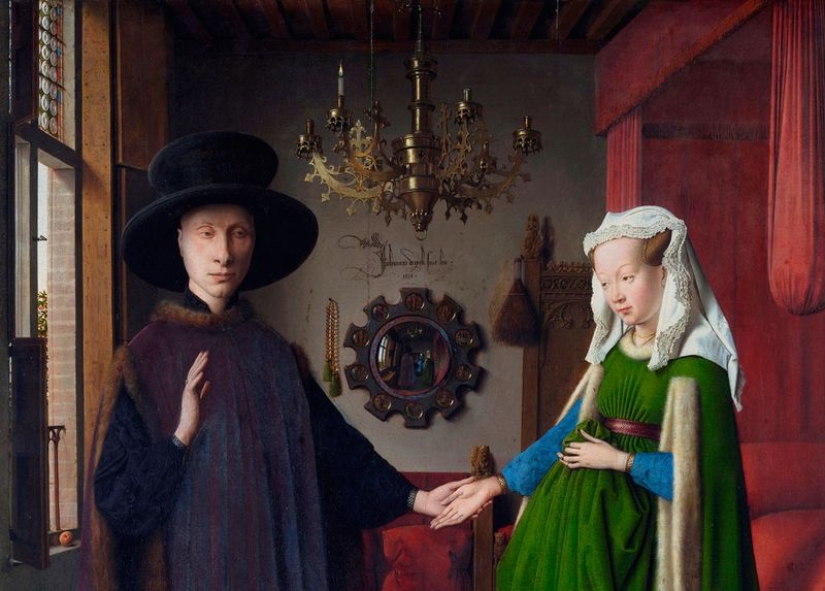
This portrait composition became famous as the first double portrait in European painting. Experts at the National Gallery in London believe that Jan van Eyck depicted his friend the merchant Giovanni Arnolfini and his wife, who lived in Bruges in 1434. Presumably they are in their home.
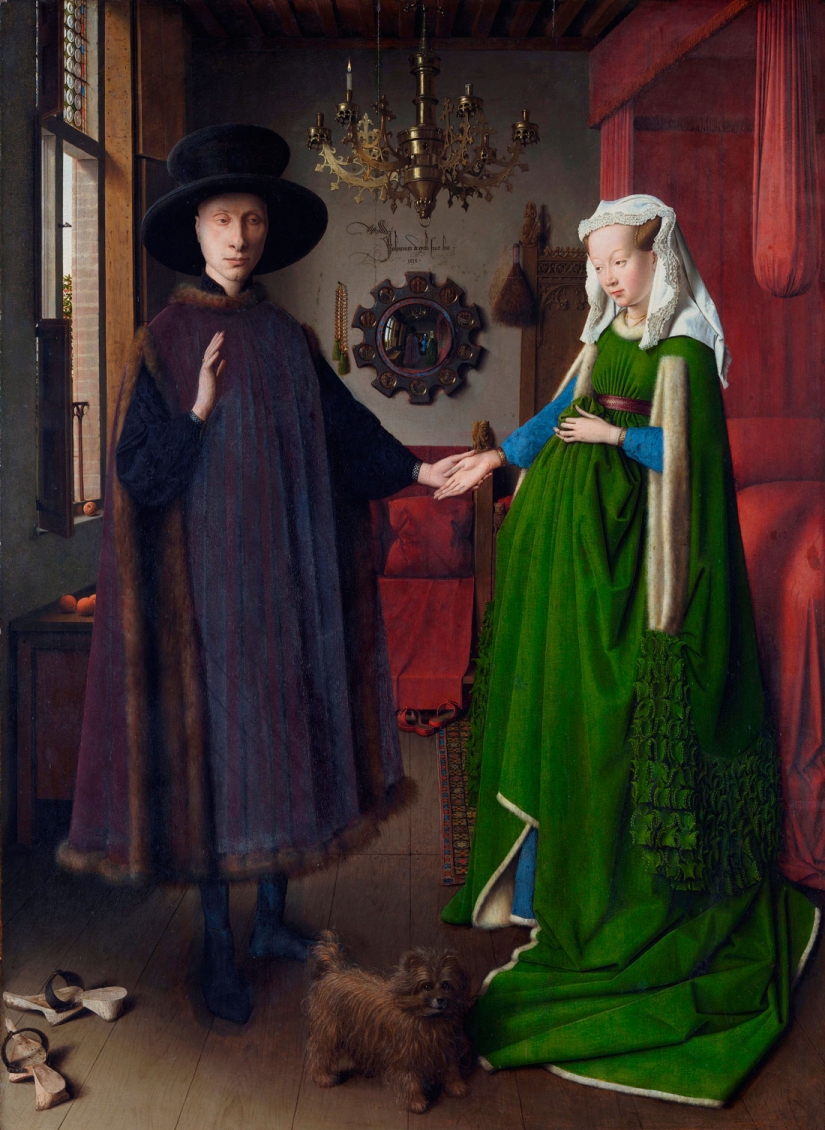
This is where the simple interpretation of the image ends and begins an excursion into the world of secret writing by artists of the Middle Ages. Experts rightly consider Jan van Eyck's canvas to be the most difficult to interpret work of art, which gave life to several versions of interpretation at once. Scientists are still arguing about both the origin of the characters and the details of the interior of the room.
In 1434, Bruges was a major trading center in Europe. It has been mentioned as "the most famous city in the world, famous for successful merchants and glorious goods." The large port contributed to the development of trade, the prosperity of banking, and a variety of crafts.
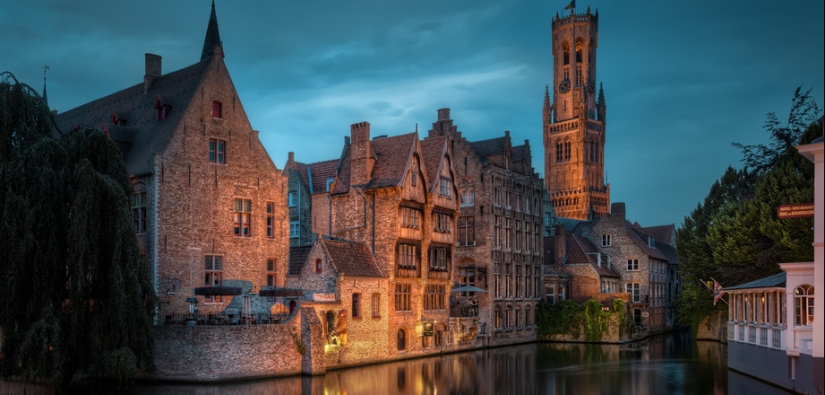
In the center of the painting there is a man and a woman standing in the center of the room. The artist suggests looking at what is happening as if from above, which explains the steeply ascending floor, the absence of a single point of perspective. Nevertheless, the master emphasizes the semantic center of the portrait, drawing the viewer's attention to the outstretched hands.
In addition to the bed, the composition contains important semantic elements: a window, fruit, a lap dog, a mirror, a chandelier and a lot of small details. All the elements are carefully worked out. So, the peel pattern is noticeable on oranges. It is noteworthy that the Arnolfini couple are not the only heroes of the composition. If you look closely, you can see the reflection of two more people standing on the threshold of the room in the mirror.
The heroes froze in a ceremonial pose, as evidenced by the man's hand raised in the oath. At the same time, he very carefully takes the woman's left hand with his left hand. The action takes place in the bedroom, as evidenced by a large four-poster bed. The couple is dressed in festive clothes trimmed with ermine. The appearance and clothing of the heroes deserve a detailed study.
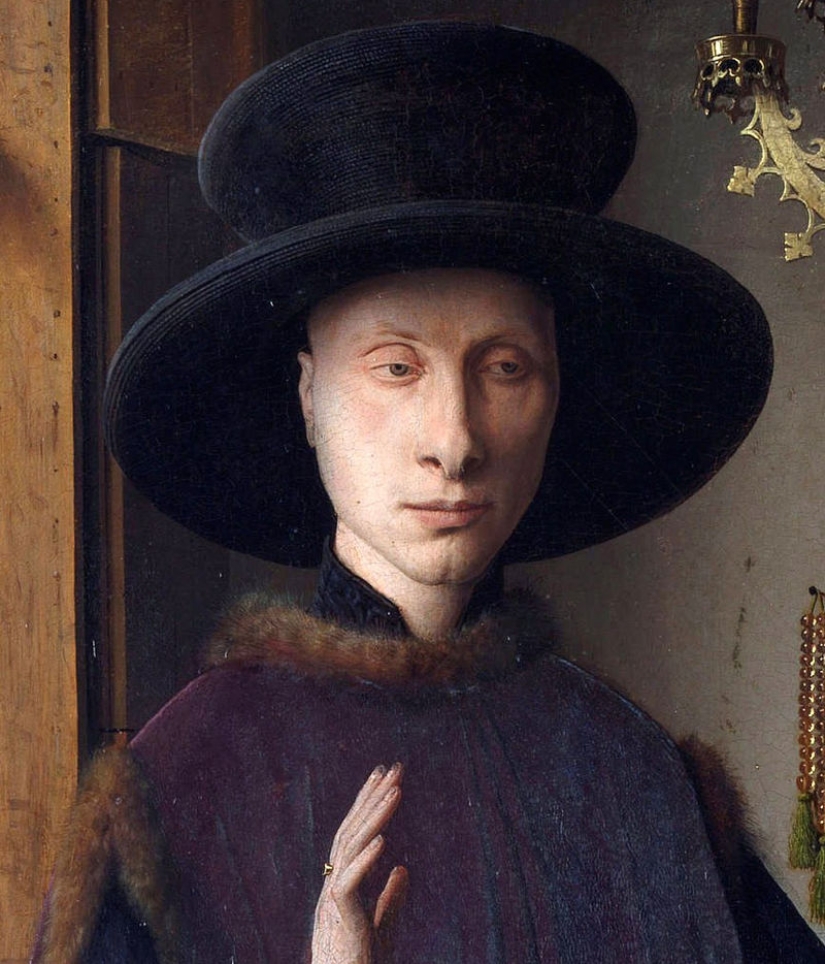
Experts came to the conclusion that Jan van Eyck depicted representatives of the wealthy burghers in a double portrait. According to records, five Arnolfini lived in Bruges in 1434. Comparing many factors, scientists came to the conclusion that the double portrait depicts the merchant Giovanni Arnolfini with the thirteen-year-old Constance Trenta, who came from a noble family. Deciphering the hidden meaning of the painting confirms this version.
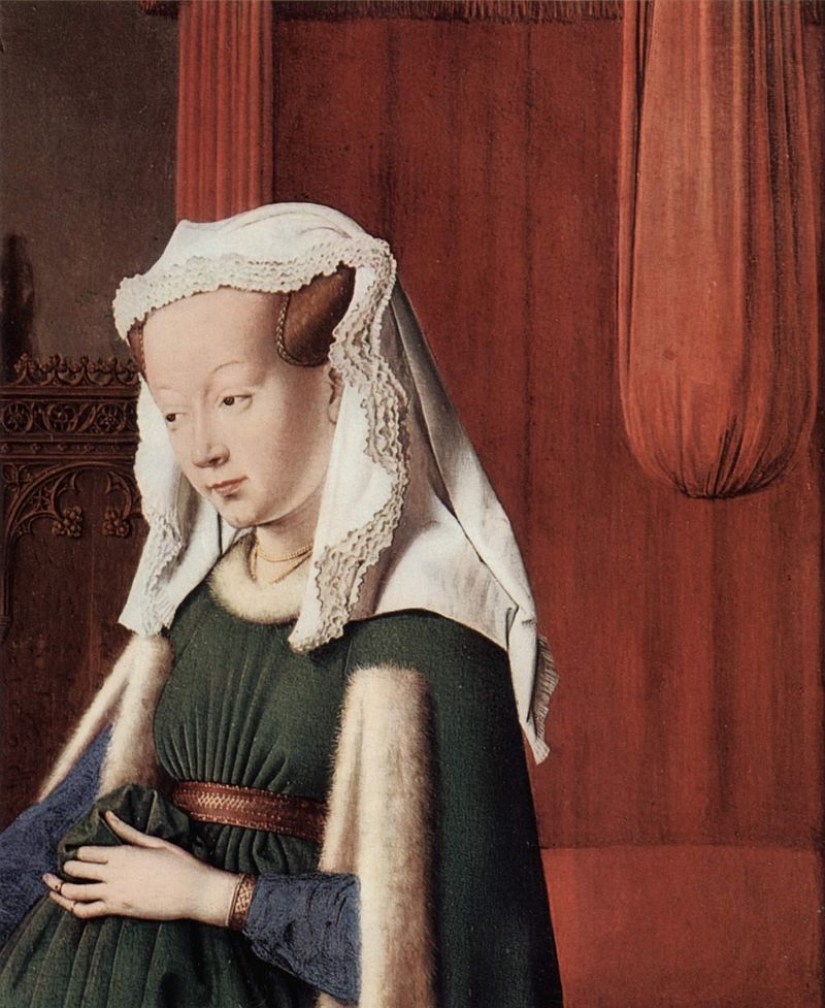
At all times, Europeans have appreciated furs. Not everyone could afford to trim clothes with ermine. The women's dress is not only lined with fur, but also has a long train, which the accompanying person was supposed to carry while walking. Moving around in such an outfit was not an easy art, which was perfectly mastered by the daughters of aristocrats.
It is noteworthy that the man is wearing outerwear and a hat, as if he had just come from the street. The woman, on the contrary, was in the room, waiting for him. A rounded belly hints at pregnancy, although it is impossible to draw unambiguous conclusions. In the Middle Ages, during a wedding, a woman specially selected the folds of a heavy dress to humbly emphasize the childbearing function in the family. While this ritual gesture signified fertility, the blue and green tones of the dress corresponded to chastity, purity.
The man is dressed in an upper dress and a wide-brimmed top hat. Black undergarments and wooden shoes speak of an unequal marriage. He does not belong to the aristocratic class. In the Middle Ages, gentlemen moved on stretchers or on horseback, so as not to get dirty in the street dirt. The artist highlighted the man's appearance, paying attention to the fine facial features. The appearance of a woman corresponds to the collective ideal of beauty of that time. So the master emphasized the dominant role of men in society, family.
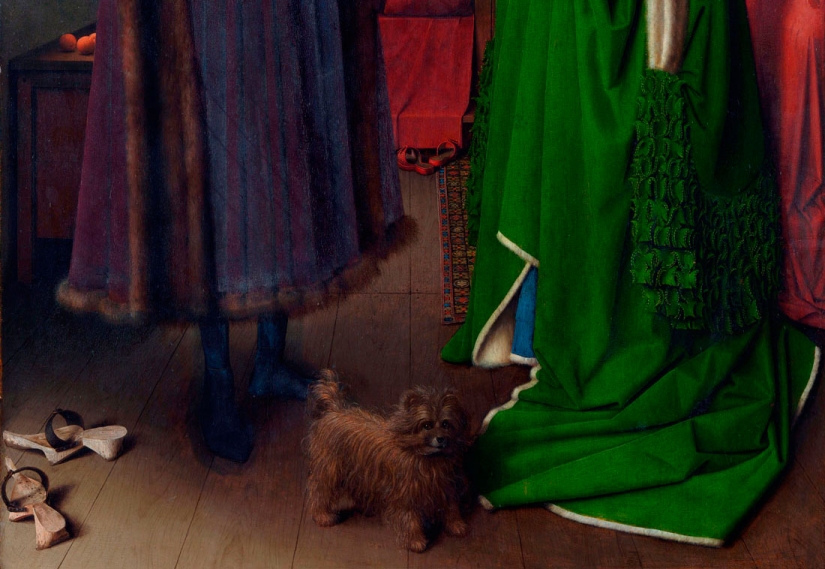
The decoration of the room supports the version about the prosperity of the owners. A glazed window, overseas fruits, an oriental carpet, a mirror could not be seen in every house. A canopy bed is a significant piece of furniture. The canopy was raised for the day, turning the bedroom into a living room. The absence of a fireplace suggests the idea of a fictional or collective interior.
Experts came to the conclusion that a man and a woman were captured at the time of marriage. In this case, the picture acts as a document. In the XV century, it was believed that heaven sanctifies the bonds of marriage without the intervention of a priest, witnesses. The couple could get married at any time and in any place. The next morning, the husband and wife went to church together to demonstrate their new status to society.
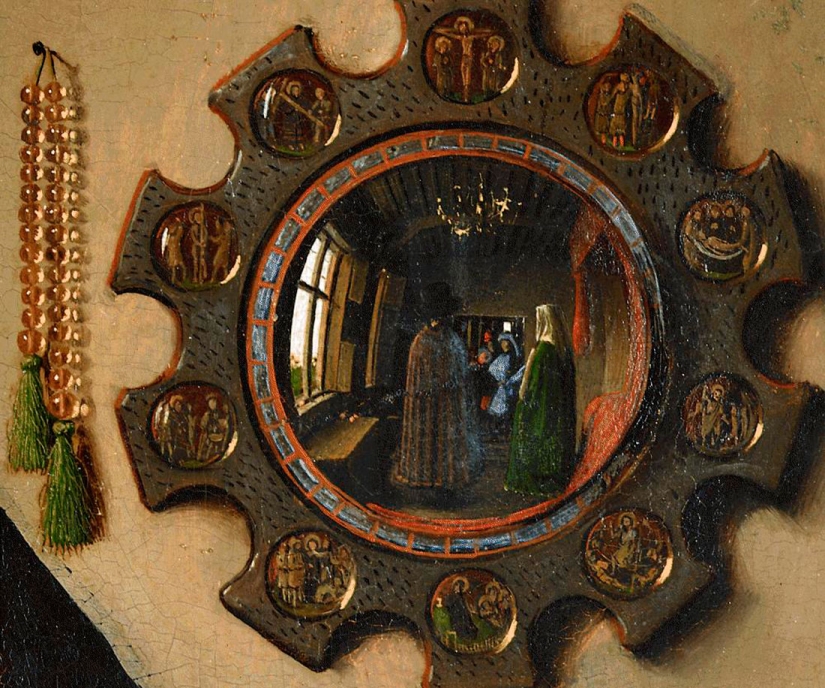
The rite contained the words of a vow. The man swore, raising his hand up, as Giovanni Arnolfini did. Already in those days, the traditional ring served as a pledge of loyalty. At the climax, the newlyweds joined hands, as shown in the picture. In the XV century, brides did not yet know wedding white dresses. However, the symbolism of the canvas conveys much more information. In this context, the picture can act as a biography of young people who have tied the knot.
The composition is generously filled with elements of important symbolic significance. The objects surrounding the Arnolfini couple tell about the family foundations of the Middle Ages and the further fate of the characters.
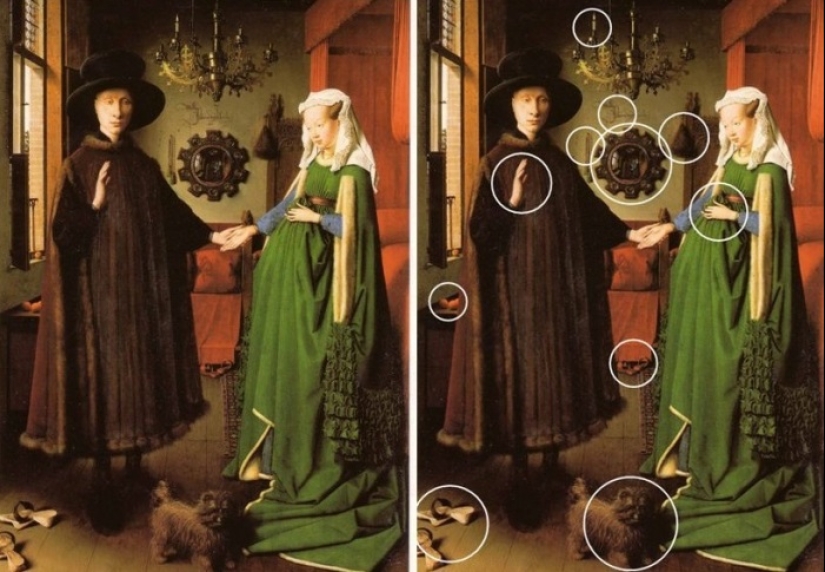
It is known from the records of the city of Bruges that Constance's wife died in childbirth. The picture fully confirms this information. So, the canopy bed was the place where the woman in labor welcomed visitors. A deceased family member was put in the same bed, with whom relatives and family friends said goodbye.
The hairstyle of the woman testifies in favor of the version of the painting-the biography of the Arnolfini couple. Brides walked down the aisle bare-haired. The double portrait depicts a woman with a covered head, like a married lady. Most likely, the double portrait was intended to document the merger of two noble families.
The expected offspring would strengthen the union and give rise to a powerful branch of the family tree. As you know, the aspirations of the heads of merchant families were not justified. Constance died during childbirth. Giovanni Arnolfini wished to have a painting in memory of his first wife, to whom he remained faithful until the end of his life. In any case, history has not preserved evidence of the second marriage of the Burgher.
Scientists examined the painting by Jan van Eyck and found that many elements of the composition were completed after the portrait was painted. The inscription on the wall was also executed last. Scientists are still arguing about the meaning of the unusual wording.
Usually the artist signed the canvases with the words "Eik made". Here the master wrote: "Eik was here," which sounds like a testimony. Experts do not exclude that one of the reflections in the mirror belongs to the painter. At that time, the practice of documenting transactions on paper was expanding. In this light, the artist's signature acquires the real power of a written certificate, and the painting turns into an official document.
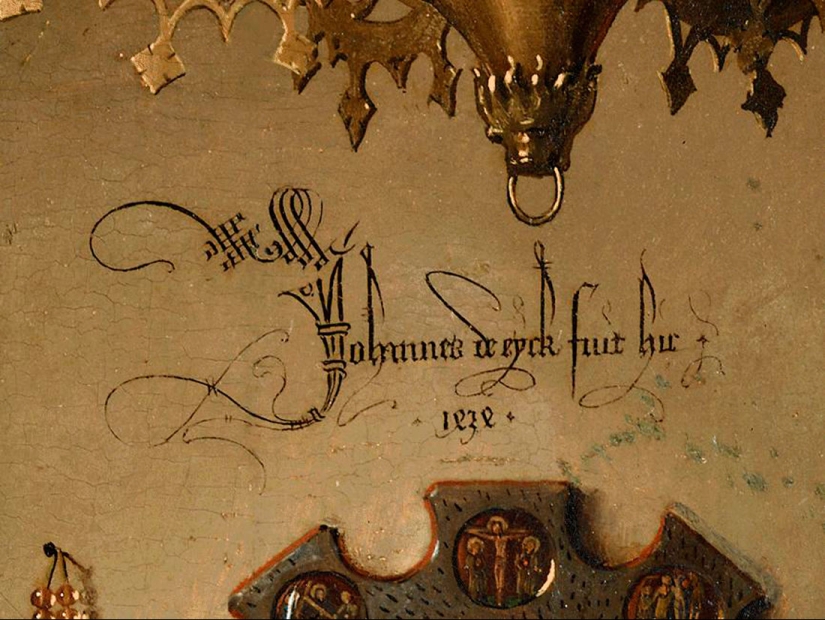
Summing up the decoding of the double portrait of the Arnolfini couple, it can be concluded that two wealthy families decided to become related by giving the thirteen-year-old noblewoman Constance to the merchant's son Giovanni. They hoped for the birth of children who would inherit the title of one family and the wealth of another. Giovanni was very sensitive to his wife. She, in turn, supported family traditions.
The hopes did not come true. Constance died without giving birth to an heir. A friend of the young Arnolfini, the artist Eik, painted a double portrait in memory of the young Constance. For four or five centuries, the painting passed from hand to hand, having managed to visit the courtier's house, the emperor's palace. It was given, inherited, conquered. Now the canvas is kept in the London National Gallery as a masterpiece of portraiture.
Recent articles

Fritz Haarmann — German vampire killer, distinguished by remarkable cruelty and cynicism. His victims were young men, as he had ...

A photo series by French photographer Alain Delorme shows China's consumer society through photographs of workers transporting ...

Marilyn Monroe knew how to be seductive even in the most prosaic situations, and the usual breakfast in bed is no exception. Look ...